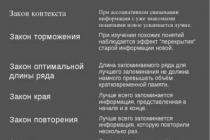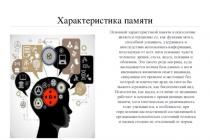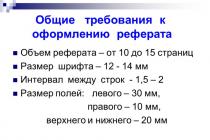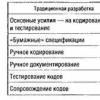APPROVE:
[Job title]
_______________________________
_______________________________
[Name of company]
_______________________________
_______________________/[FULL NAME.]/
"______" _______________ 20___
JOB DESCRIPTION
designer
1. General Provisions
1.1. This job description defines and regulates the powers, functional and job duties, rights and responsibilities of the designer [Name of organization in the genitive case] (hereinafter referred to as the Company).
1.2. The designer is appointed to the position and dismissed from the position in the established current labor law by order of the head of the Company.
1.3. The designer belongs to the category of specialists and reports directly to [title of the immediate supervisor in the dative case] of the Company.
1.4. A person who has:
- Category I designer: higher professional (art and design) education and work experience as an artist-designer of the II category for at least 3 years.
- Category II designer: higher professional (artistic and design) education and work experience as an artist-designer of category III for at least 3 years.
- Category III designer: higher professional (art and design) education and work experience in the specialty acquired during the period of study, or work experience in engineering and technical positions without a qualification category.
- Designer: higher professional (art and design) education without presenting requirements for work experience or secondary vocational (art and design) education and work experience in the position of a design engineer of category I for at least 3 years or other positions filled by specialists with secondary vocational education, not less than 5 years.
1.5. The designer must know:
- regulations, teaching materials on artistic design and legal protection of industrial designs;
- prospects for the technical development of the enterprise;
- trends in the improvement of designed products;
- technical aesthetics and ergonomics;
- methods of artistic design and artistic and graphic works;
- production technology, operating principles, installation conditions and technical operation products under development, standards in force in the industry and at the enterprise, technical conditions relating to artistic and design developments;
- Unified system of design documentation;
- Unified system of technological documentation;
- requirements for the development and execution of art and design documentation;
- technical characteristics and properties of materials used in the designed structures;
- the main requirements that must be taken into account in the process of designing products (functional, technical and constructive, ergonomic, aesthetic);
- methods of carrying out technical calculations in artistic design;
- basics of standardization and patent science;
- the procedure for conducting artistic and design expertise of product designs, the criteria for aesthetic assessment of their quality;
- the procedure for attestation of the quality of industrial products; technical means used in the design;
- the procedure for filing applications for industrial designs;
- advanced domestic and Foreign experience artistic design;
- fundamentals of economics, organization of production, labor and management;
- fundamentals of labor legislation;
- labor protection rules and regulations.
1.6. During the temporary absence of the designer, his duties are assigned to [deputy position].
2. Job responsibilities
The designer performs the following labor functions:
2.1. Develops art and design projects for products (complexes) for industrial and domestic purposes, providing high level consumer properties and aesthetic qualities of the designed structures, their compliance with technical and economic requirements and progressive production technology, ergonomic requirements.
2.2. Performs selection and analysis of patent and other scientific and technical information required at various stages (stages) of artistic design. It studies the requirements imposed by customers on the designed products, the technical capabilities of the enterprise for their manufacture.
2.3. Carries out a comparative analysis of similar domestic and foreign products, an assessment of its aesthetic level.
2.4. Participates in the implementation of individual stages (stages) and areas of research and experimental work related to the solution of artistic and design problems, in the preparation of technical specifications for design and their coordination with customers, in the development of artistic and design proposals.
2.5. Carries out using new information technologies search for the most rational solutions for structural and finishing materials and details of external design, volumetric and graphic design, detailing of product forms, develops layout and compositional solutions, prepares data for calculations business case proposed design.
2.6. Develops the necessary technical documentation for the designed product (layout and general view drawings, sketch and working drawings for layout, demonstration drawings, color graphic ergonomic schemes, working drafts of models), participates in the preparation of explanatory notes for projects, their review and protection.
2.7. Performs work related to form design accompanying documents, packaging and advertising of designed products.
2.8. Prepares materials for work on standardization in the field of artistic design.
2.9. Carries out control over the compliance of the working drawings of the product and technological equipment with the art and design project, especially parts and assemblies that may affect the ease of use and appearance designs, as well as architectural supervision over the implementation of artistic and design solutions in the design, manufacture, testing and fine-tuning of prototype products and the preparation of technical documentation for serial (mass) production, makes the necessary changes to it.
2.10. Participates in the preparation of applications for industrial designs, in the preparation of materials for the artistic and design examination of projects and the presentation of newly mastered products for attestation and certification.
2.11. He studies advanced domestic and foreign experience in the field of artistic design in order to use it in practical activities.
2.12. Prepares reviews and conclusions for rationalization proposals and inventions concerning product designs under development, draft standards, specifications and other normative documents on artistic design.
2.13. Maintains a file of implemented projects, samples of materials used.
2.14. Prepares documentation for completed art and design developments, draws up reports on the results of the work performed.
When need-to-know designer can be involved in the implementation of their official duties overtime, in the manner prescribed by the provisions of federal labor law.
3. Rights
The designer has the right:
3.1. To give instructions to subordinate employees and services, tasks on a range of issues included in his functional duties.
3.2. To control the fulfillment of production tasks, the timely execution of individual orders and tasks by subordinate services.
3.3. Request and receive the necessary materials and documents related to the activities of the designer, his subordinate services and departments.
3.4. Interact with other enterprises, organizations and institutions on production and other issues related to the competence of the designer.
3.5. Sign and endorse documents within their competence.
3.6. Submit for consideration by the head of the Company submissions on the appointment, transfer and dismissal of employees of subordinate units; proposals for their promotion or for the imposition of penalties on them.
3.7. To exercise other rights established Labor Code Russian Federation and other legislative acts of the Russian Federation.
4. Responsibility and performance evaluation
4.1. The designer bears administrative, disciplinary and material (and in some cases, provided for by the legislation of the Russian Federation - and criminal) responsibility for:
4.1.1. Non-fulfillment or improper fulfillment of official instructions of the immediate supervisor.
4.1.2. Failure or improper performance of labor functions and the tasks assigned to him.
4.1.3. Unlawful use of the granted official powers, as well as their use for personal purposes.
4.1.4. Inaccurate information about the status of the work entrusted to him.
4.1.5. Failure to take measures to suppress the identified violations of safety regulations, fire and other rules that pose a threat to the activities of the enterprise and its employees.
4.1.6. Failure to enforce labor discipline.
4.2. The evaluation of the designer's work is carried out:
4.2.1. Direct supervisor - regularly, in the course of the daily implementation by the employee of his labor functions.
4.2.2. Certification Commission enterprises - periodically, but at least once every two years, based on the documented results of work for the evaluation period.
4.3. The main criterion for evaluating the work of a designer is the quality, completeness and timeliness of his performance of the tasks provided for by this instruction.
5. Working conditions
5.1. The designer's work mode is determined in accordance with the rules of the internal work schedule established by the Company.
Familiarized with the instruction ___________ / ____________ / "____" _______ 20__
Among interior designers, the question often arises of what exactly is included in architectural supervision, should the designer monitor the supply of furniture, look for a replacement for the finishing material (parquet, tiles, sockets), monitor the fulfillment of deadlines by suppliers, hang curtains ... About where the the line between author's supervision and the complete set of the object, says designer Elya Stankevich.
Elvira Stankevich is an interior designer, author of InMyRoom. Elvira graduated from the Higher School of Design and Design at the Moscow Institute of Architecture and has been working as a private designer since 2008. The ideal interior, according to the pros, is laconic and elegant, spacious, logical and “thoroughbred”.
Let's start with the main thing: maximum specificity in the project is important
In the project, I recommend doing without abstract objects or materials. Everything shown in the visualization must be available for purchase or order in Moscow within the budget of the customer. Choose the main items together with the customer before they get to the visualization. The client must sit, pull, feel and approve the pieces of furniture and decor. Minimum program cushioned furniture, kitchen, dining group, beds, all the main chandeliers, tiles in the bathrooms and in the kitchen and parquet.
Everything is under control: statements - to be!
An integral part of a complete project is a list of interior items and finishing materials. It must contain the quantity and reference to the item or material. Within the framework of the project, the search service the best price does not appear. Personally, I send my customers a spreadsheet in Excel, they can substitute the found and negotiated price themselves - the budget will be calculated automatically.
About positions that will not be in the statement and comments - why
Articles of fabric for curtains and other textiles. They need to be chosen according to the place on the object, focusing on furniture, walls and lighting. Numbers of tinting paints for walls and grout for tiles. They are also selected at the facility by color from several options. List of article numbers for all parts of complex technical kits. For example, the statement will indicate: “Shower kit for internal installation of such and such a company, such and such a collection.” And already the list of all positions is made up by managers of specialized salons. Draft materials and objects. No rotbands, plywood, adhesives, transformers. Little things, like toilet brushes and kitchen towels, if the composition in the interior is not fundamentally tied to them. The ideal complete project is one that can be implemented independently by the customer, but the client must be prepared to perform quite a lot of design tasks himself during the construction process. Or he can pay the designer for architectural supervision. What it is? I tell below.
What does the customer get rid of by ordering this service? Weekly reconciliation of the process with the project. That is, whether everything is controlled according to size and ideas. In the case when, for some reason, we have to retreat from the project, making a decision - in which direction we retreat. So that this decision does not affect the further picture. For example, if we move an outlet because it hits a rebar in the wall, then in which direction? After all, it is important that it does not end up behind the console leg or run into the molding ...
Mentioned above - the choice of paint color by color and grout for tiles. Solving any complex design-related situations that could not be foreseen in the project. Approval of sketches and colors and samples of non-standard products and works. Here we are talking about furniture, painting, decorative plaster... The choice of textiles and decor. Well, from daily dialogues on the phone with the foreman. Type: Foreman: “I didn’t find the height of the output for the sconce in your project.” Designer: "Look at the scans." Foreman: “Yes, I see it is on the reamers. A meter-forty is not too high? Designer: "No, it's ok, the bras are quite long and hang down, look at the renderings."
An interior designer is responsible for furnishing an interior with the aim of providing an aesthetically pleasing environment in a room in accordance with its intended use. In addition to performing an aesthetic function, the work of an interior designer is aimed at optimizing indoor work and improving navigation on its territory. At the same time, the arrangement of furniture is only the final stage, which is preceded by the layout of the room, the alignment of lighting, acoustics and ventilation systems, as well as wall decoration.
The profession of an interior designer is most suitable creative people with artistic ability and good aesthetic taste.
Places of work
The position of an interior designer is in demand in architectural companies, design bureaus and studios. Also, this specialist can work for himself, independently creating a “name” for himself and looking for clients.

Responsibilities of an interior designer
To better understand who an interior designer is, the main job responsibilities of this specialist will help:
- Development of architectural space-planning solutions.
- Formulation of technical specifications based on the wishes of the client.
- Development of project documentation.
- Independent maintenance of the object at all stages of work.
- Selection of finishing materials and equipment.
- Author's supervision over the implementation of all works on interior design.
Requirements for an interior designer
The main requirements for an interior designer:
- Higher specialized education.
- Knowledge of planning laws.
- Experience working with clients and contractors.
- Experience with programs such as ArchiCAD, AutoCAD, Adobe Photoshop, MS Office (it is also desirable to know CorelDraw, 3Ds max, Vray, Adobe Illustrator).
In most cases, an applicant for the position of an interior designer is required to have a portfolio of finished work.

Sample resume for interior designer
To become an interior designer, you need to get a higher architectural education. With innate talent and good aesthetic taste for successful work Interior design courses may suffice for this position.
interior designer salary
The salary of an interior designer varies from 30 to 85 thousand rubles per month. IN major cities the salary may be higher, as there are higher requirements for the originality of the design. In many ways, how much an interior designer earns depends on his skill and ability to feel and understand the wishes of the customer. The average salary of an interior designer is 60 thousand rubles a month.
1. General Provisions
1.1. The designer is appointed to the position and dismissed from the position in accordance with the procedure established by the current labor legislation by order CEO.
1.2. The designer reports directly to the General Director (Deputy General Director, Head of Advertising Service, Senior Copywriter).
1.3. A person with an average professional education without presenting requirements for work experience or initial vocational education and work experience in the specialty for at least 2 years.
1.4. The designer must have computer skills at the level of a confident user.
1.5. The designer must know:
- basics of advertising organization;
- the order of registration of premises and showcases;
- resolutions, orders, orders, other guidelines and regulations concerning the work of the organization;
- rules and methods of organizing customer service;
- fundamentals of aesthetics and social psychology;
- labor legislation;
- the rights and obligations of employees and the mode of their work;
- Internal labor regulations;
- rules and norms of labor protection, safety regulations, industrial sanitation and hygiene, fire safety, civil defense.
2. Functions
2.1. Implementation of the acceptance of orders for the development of the graphic part of the original layouts of advertisements and elements of the original layouts, as well as the wishes and requirements necessary for their creation; together with the customer and the responsible manager, agreeing on the timing of their manufacture.
2.2. Creation of the graphic part of the original layouts of advertisements and other materials and documents.
2.3. Creation of a graphic part of a commercial advertisement designed to present advertising opportunities to potential advertisers.
2.4. Monitoring the compliance of the produced original layouts of advertisements and graphic elements of original layouts with the requirements of the Law on Advertising, the requirements of the customer, the responsible employee of the advertising service, internal requirements existing in the organization, quality requirements.
2.5. Creation and transfer of plans, reports on the work done and other documents to the immediate supervisor and receipt of the necessary documents from him.
2.6. Interaction with employees of the advertising service to perform joint tasks.
3. Job responsibilities
3.1. The designer creates:
3.1.1. Informational, commercial, trade announcements.
3.1.3. A web page in a given style, arranges the elements of the page, and also formats them accordingly *.
3.2. The designer develops:
3.2.1. Design layouts for printed advertising materials and magazine covers.
3.2.3. General style of the site*.
3.2.4. An interior designer develops design projects for residential and office premises. Living room design (http://www.inout.info/ design-gostinoy .html), kitchen, bedroom, integrated design country house or apartments. When creating a design project for an office space, corporate style, colors and other paraphernalia are taken into account.
3.3. The designer does:
3.3.1. Prepress preparation of original layouts in accordance with the technological requirements of printing production.
3.3.2. Carrying out design work in the premises of the organization.
3.3.3. Studying the requirements imposed by customers on the designed products, the technical capabilities of the organization for their manufacture.
3.3.4. Selection and analysis of scientific and technical information required at various stages (stages) of artistic design.
3.3.5. Comparative analysis similar domestic and foreign products, assessment of their aesthetic level.
3.3.6. Analysis of the experience of other organizations in the decoration of premises, advertising placement.
3.3.7. Interaction with the technical service in order to maintain computer technology used by the advertising department, in working order and ensuring the modernization of equipment and software.
3.4. The designer complies with labor and production discipline, labor protection rules and regulations, industrial sanitation and hygiene requirements, fire safety requirements, and civil defense.
3.5. The designer executes the orders and orders of the administration of the organization.
3.6. The designer informs the management about the existing shortcomings in the work of the organization and possible measures to eliminate them.
3.7. The designer is prohibited from disclosing information and information that is a trade secret of the organization.
4. Rights
4.1. The designer has the right:
4.1.1. Give orders and take appropriate actions to eliminate the causes that create obstacles for the designer to carry out his functional duties.
4.1.2. Make proposals to the management of the enterprise to improve the work related to functional duties designer and the organization as a whole.
4.1.4. Get acquainted with the decisions of the immediate supervisor and senior management regarding the activities of the advertising service and the designer himself.
4.1.5. Reach out to managers and employees of all structural divisions organization for the information necessary to perform tasks, functions and job responsibilities.
4.1.6. Require immediate supervisor and senior management to assist in the performance of tasks, functions and job responsibilities.
4.1.7. Require timely purchase from the technical service technical means, components and software necessary for the functioning of computer equipment in the department.
4.1.8. Within the allocated budget, acquire independently the necessary literature and specialized software.
5. Responsibility
5.1. The designer is responsible for:
5.1.1. Failure to perform or improper performance of their duties.
5.1.2. Inaccurate information about the status of the received tasks and instructions, violation of the deadlines for their execution.
5.1.3. Violation of the current legislation of the Russian Federation on advertising, regulatory legal acts, regulations, instructions and others guidance documents relating to advertising activities.
5.1.4. Failure to comply with orders, orders of the administration of the organization.
5.1.5. Actions and omissions committed in the process of performing tasks, functions and job responsibilities, resulting in the loss of advertisers, transactions, damaging the reputation of employees and departments.
5.1.6. Violation of the Internal Labor Regulations, fire safety and safety regulations established in the organization.
Before talking about the rights, duties and responsibilities of an interior designer, it is worth considering the main stages of working on a project. The project, of course, begins with getting to know your client, presenting your work to him, analyzing the plan of the room to be worked on.
After a preliminary acquaintance, the designer goes to the site and discusses the preferences and wishes of his customers. It is necessary to set a goal and draw up a technical task. At this stage, it is important for the designer to get the largest number information. At this stage, it is worth calculating the preliminary cost of the project.
This is followed by taking measurements of the object and compiling detailed plan premises. On the basis of the drawn up plan, 2-3 variants of sketches (visualizations of the room) are prepared. This requires knowledge of specialized programs and possession of the necessary knowledge in the field of composition, coloring, materials science, ergonomics, etc.
The next step will be to provide the customer with preliminary sketches, discuss them, make the necessary adjustments, after which final drawings, visualizations, specifications, etc. are prepared.
In some cases, customers order architectural supervision. This service is not always in demand, since, having a complete set of drawings in hand, the customer himself can control everything. But for an additional fee, a designer can do this. Then his duties include the selection of finishing materials, furniture, decor, equipment, lighting. and control over the execution construction works on site, making adjustments to finished project, if there are any difficulties in implementation.
Now consider duties of an interior designer, which indicate in job description:
- 1. Analysis of the client's desires, development of sketches and collages that reflect these desires, discussion with the client of the future interior;
- 2. Measurement of the premises to be worked on, development of a draft design and 3D models of the premises;
- 3. Selection of materials, choice of colors, completion of design development;
- 4. Selection together with the client of furniture and small interior items that will have to fit into the overall design;
- 5. Development of design solutions in cooperation with related specialists;
- 6. Preparation working documentation with all necessary drawings, specifications, sheets and sweeps;
- 7. Calculation of the cost of the future interior, drawing up work schedules for builders and plans;
- 8. Monitoring the progress of construction work, adjusting the project if necessary.
Worth paying Special attention for such services as drawing up a statement, architectural supervision and equipment of an object.
Drawing up statements. The statement must include the quantity and reference to the item or material. Within the framework of the project, the best price search service is not provided. You can send your customers a table in Excel, in which they can substitute the found price themselves - the budget will be calculated automatically. The list does not include items such as article numbers for fabrics for curtains and other textiles, tinting numbers for wall paint and grout for tiles, article lists for all parts of complex technical kits, draft materials and items. Some of these things need to be selected on the spot, and some things are only done by trained specialists (store managers).
Author's supervision. Weekly reconciliation of the process with the project. That is, whether everything is controlled according to size and ideas. In the case when, for some reason, you have to retreat from the project, making a decision - in which direction to retreat. So that this decision does not affect the further implementation of the project and does not spoil the picture as a whole. Architectural supervision does not include technical supervision. The designer does not control the horizontal and vertical planes, the technology of applying plaster or installing gypsum structures. In the same way, the designer is not engaged in the work of the project manager - he does not organize the process. He does not compose calendar plans construction and supply, the time of meetings of all participants in the process, the purchase and supply of goods, and other organizational activities.
Complete set of the object. In this case, the designer takes over the search for the best price and conditions. He concludes contracts, checks all contractual conditions, controls that all wishes are indicated and all details of orders are signed. After the conclusion of the contract and placing an order, the designer monitors the delivery time of finishing materials and interior items and organizes the acceptance of goods at the facility. Checking all goods for quality and searching for defects also lies with the designer. Among other things, it may be necessary to search for materials and goods to replace those discontinued or greatly increased in price from the moment of the project to the moment of purchase
Now a little more about what the interior designer is not required to do. Sooner or later, each designer will have a dispute with a client or colleagues about what and to what extent is included in the design project and architectural supervision. The project does not include:
- · Electrician. The designer indicates the location of sockets and switches, lighting schemes, outputs, manufacturers and models of equipment. All this is agreed with the client and further transferred to the electrical engineer. An electrical project is not the work of a designer, it is the work of an engineer. He calculates the cross section of the wire, designs the shield and the power reserve.
- · Built in furniture(dressing room, kitchen, etc.). The interior designer only creates a draft design of the built-in furniture, i.e. specifies its configuration and appearance. The working design for furniture is designed by the contractor, whom the client can choose on the basis of the draft design, after calculating the cost. The contractor is already developing a detailed set of built-in furniture. On designer's supervision can agree on the color, texture and fittings for furniture.
- · low current equipment. The designer indicates the location and type of low-voltage equipment (motion sensors, smart home elements) in the project on the drawings, which later becomes the terms of reference for contractors. After that, the contractor purchases necessary equipment. The designer can only indicate the wishes of the clients in the terms of reference and, at the implementation stage, coordinate the visible elements - outlets, sockets, gratings, etc.
- · Plumbing. In the project, the designer must indicate the binding of plumbing equipment and, if there is a non-standard solution, describes the principles of conclusions that engineers should pay attention to. Everything else builders get from detailed instructions that comes with the equipment.
- · Access hatch device. The builders will coordinate this item with the designer for architectural supervision. In the project, the designer can specify the desired location.
- · Calculation of the construction estimate. The designer is not competent in calculating the construction estimate, so it is considered by the construction contractor, foreman or head of the construction team.
- · Supervision of the construction team. This function should be performed by technical supervision. The designer is not obliged to check the curvature of the walls and the correctness of the technology for applying plaster, etc. If there is no technical supervision, then the customer himself is engaged in this.
- · Project approval. This is done by the client himself or by a specially hired organization. The designer, for his part, must know and comply with the norms of the law so that there are no problems with the coordination of the project.
- · The exact amount of purchased material. In the project, the designer can indicate the manufacturer, name, model and type of material, its quantity for the project. With this data, the client, independently or with the help of a designer, purchases necessary material. In the store, the sales manager is required to help the customer with the calculation of a specific quantity and give advice on how much material to take.
- · Executive drawings of complex technical solutions. Fireplace, aquarium, sauna, cinema and other elements that require development by professionals. When creating a project, the designer receives circuit diagrams and restrictions from contractors, takes them into account in the preliminary design. At the implementation, contractors agree with the client on the final equipment and estimate, and then create working documentation.














